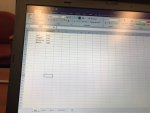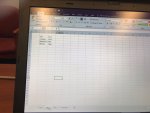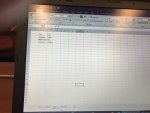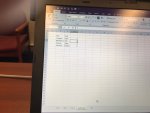Hello:
This is a tough question to verbalize but I'll try my best. I will have a workbook with multiple sheets...one for each day. The sheets will show the names of people visiting a website. What I'm trying to do, is have a count of the number of times each "name" hit the website, but I won't know the names in advance. Maybe the question will be clearer after looking at the photos attached.
DAY 1 Sheet: shows the names (which I don't know in advance) who visited the website.
DAY 2 Sheet: shows the names (which I don't know in advance) who visited the website. It's the same people as Day 1.
DAY 3 Sheet: shows the names (which I don't know in advance) who visited the website.This time, 2 names are the same as previous days but one is different.
SUMMARY Sheet: Is there a way to show each name and the number of times they appear in the "day sheets". Since I don't know the names in advance, I can't populate the Summary Sheet with names.
Sorry for the rambling and I appreciate your help.
Cheers!
This is a tough question to verbalize but I'll try my best. I will have a workbook with multiple sheets...one for each day. The sheets will show the names of people visiting a website. What I'm trying to do, is have a count of the number of times each "name" hit the website, but I won't know the names in advance. Maybe the question will be clearer after looking at the photos attached.
DAY 1 Sheet: shows the names (which I don't know in advance) who visited the website.
DAY 2 Sheet: shows the names (which I don't know in advance) who visited the website. It's the same people as Day 1.
DAY 3 Sheet: shows the names (which I don't know in advance) who visited the website.This time, 2 names are the same as previous days but one is different.
SUMMARY Sheet: Is there a way to show each name and the number of times they appear in the "day sheets". Since I don't know the names in advance, I can't populate the Summary Sheet with names.
Sorry for the rambling and I appreciate your help.
Cheers!









